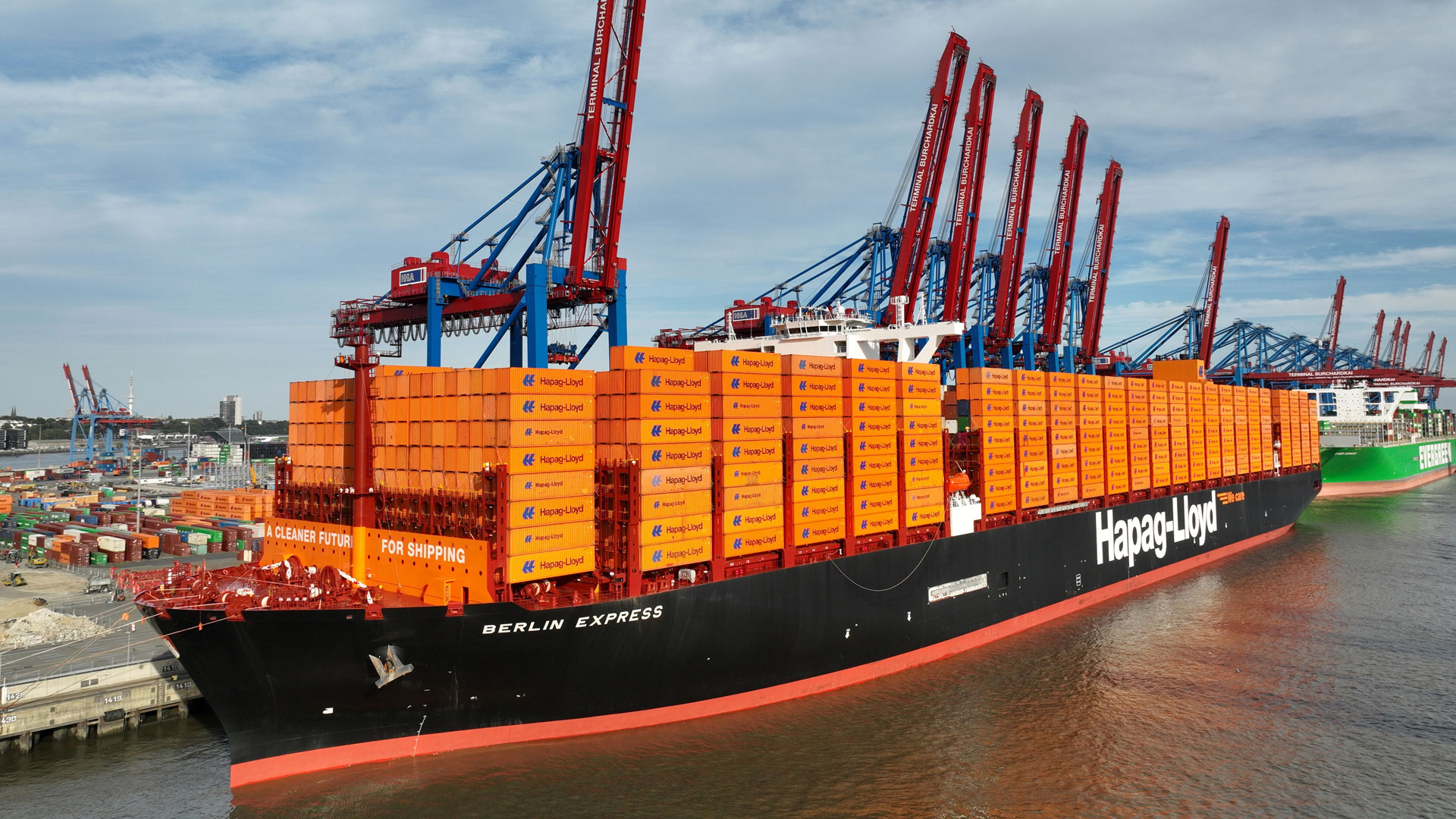Energy hub and port location with a future
Brunsbüttel aims to further strengthen its role as a multimodal energy hub. ...

By Dr. Jasper Pongs
Various alternative fuels are currently emerging as options for the energy transition. In addition to currently available biofuels and biomethane, green methanol and ammonia will also play a role in the medium term. A significant proportion of the world’s order books for container ships consists of new vessels powered by methanol. Green methanol is available in the medium term, relatively easy to produce and can be stored at ambient temperature. Its decarbonisation potential of up to 95% is particularly impressive, making it attractive for retrofitting existing ships.
To take advantage of the new capabilities, Hapag- Lloyd has arranged with the shipping company Seaspan to convert five chartered 10,100 TEU container ships to run on methanol from 2026. Specifically, this means that the conventional MAN S90 engines will be converted to dual-fuel engines. The company is signed the contract to develop the necessary conversion kit back in the summer of 2023. The conversion will require around 75-90 days per ship and cost around USD 120 million.
However, there are also challenges associated with using methanol as a fuel. Due to its low calorific value – the same amount of methanol contains only about half the energy of conventional fuels – a significantly larger tank volume is required. This means that some of the available space for storing containers on board is lost. Another factor is the high cost of producing the fuel and the limited uses of converted ships when running on methanol. The supply infrastructure for methanol is not yet sufficiently widely developed, which means the fuel is not available everywhere. Hapag-Lloyd is in discussions with methanol producers and project developers around the world to further the decarbonisation of the shipping industry and ensure the flexible use of converted vessels.
The energy transition in the shipping industry is a mammoth collective project. Establishing more sustainable fuels such as methanol as a long-term replacement for fossil fuels will require investment in the supply structure and partnerships with producers. All market participants must be willing to decarbonise their supply chains and prioritise sustainable solutions. Hapag-Lloyd intends to live up to its responsibility: Its sustainability strategy aims to reduce greenhouse gas emissions by a third by 2030 as compared to 2022.
"Hapag-Lloyd's
sustainable strategy
aims to reduce
greenhouse gas
emissions by a third
by 2030 as
compared to 2022."
To achieve this, the company is focusing on the use of new vessels with the latest technology, the complete modernisation of the fleet and the use of alternative fuels. Interim solutions such as biofuels are already available, while other fuels such as green methane, ammonia and methanol present promising longerterm solutions. It should be noted, however, that the competitiveness of methanol and ammonia is still unclear. Furthermore, consistent and fair regulation and cost competitiveness are also crucial – because the energy transition can only succeed with investment and an increased willingness to spend on the part of all market participants.